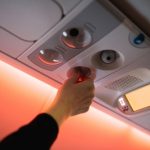 In the cold winter months, one crucial aspect of aircraft maintenance that deserves utmost attention is the cabin heating system. Faults or malfunctions in these systems can result in uncomfortable and unsafe conditions for passengers and crew. Therefore, it is essential to regularly inspect, maintain, and troubleshoot the heating systems to ensure optimum performance. In this blog, we will delve into the various aspects of airplane cabin heating systems, including maintenance and troubleshooting tips specifically tailored for winter weather conditions.
In the cold winter months, one crucial aspect of aircraft maintenance that deserves utmost attention is the cabin heating system. Faults or malfunctions in these systems can result in uncomfortable and unsafe conditions for passengers and crew. Therefore, it is essential to regularly inspect, maintain, and troubleshoot the heating systems to ensure optimum performance. In this blog, we will delve into the various aspects of airplane cabin heating systems, including maintenance and troubleshooting tips specifically tailored for winter weather conditions.
Call First Flight Aviation! (937) 885-5580
Understanding Airplane Cabin Heating Systems:
Airplane cabin heating systems are responsible for providing a comfortable environment inside the aircraft, especially during colder weather. These systems work by drawing in ambient air, which then passes over heated surfaces before being circulated through the cabin. The heating elements are usually positioned near the engine exhaust, taking advantage of waste heat to warm the air. However, in colder climates, the system may incorporate additional heat sources, such as auxiliary heat exchangers or electric heaters, to ensure adequate heating.
Maintenance Tips for Winter Weather:
1. Regular Inspections:
Performing routine inspections of the cabin heating system is crucial in identifying and preventing potential issues before they worsen. This includes examining the heating elements, fans, filters, ductwork, and control mechanisms for any signs of wear, damage, or blockages. Snow, ice, or debris accumulation should be promptly removed to prevent airflow restrictions.
2. Filter Replacement:
Dirty or clogged filters can significantly compromise the performance of the heating system. Regularly monitor and replace filters during the winter months, as they tend to accumulate more debris due to increased airborne particles and the use of auxiliary heating sources. Clean filters ensure proper airflow and prevent recirculation of contaminants in the cabin.
3. Test the Thermostat:
Verify the accuracy and responsiveness of the thermostat by comparing the temperature readings with a calibrated thermometer. This is important to ensure that the system maintains the desired cabin temperature effectively. Faulty thermostats should be replaced promptly to prevent over- or under-heating of the cabin.
4. Check the Ductwork:
Inspect the ductwork for any leaks, cracks, or loose connections that may allow heat loss or cold air infiltration. Damaged ducts can disrupt the airflow, resulting in inconsistent heating distribution and discomfort for passengers. Close attention must be paid to areas where ducts pass through unheated spaces, as these are more susceptible to freezing or condensation issues.
Troubleshooting Tips for Winter Weather:
1. Inadequate Heating:
If passengers complain about insufficient heating, start by checking the temperature differential across the heating elements. A significant difference indicates a malfunctioning or inefficient heating source. Conduct a thorough inspection to identify and address any mechanical failures or blockages that may be hindering proper heat transfer. Additionally, confirm that all auxiliary heating sources are functioning correctly.
2. Uneven Heating:
Uneven heating distribution within the cabin can lead to passenger discomfort, particularly in extreme winter weather. This issue may arise due to uneven or obstructed airflow from the heating system. Check for any obstructions or blockages in the ductwork or vents and remove them promptly. Balancing the airflow by adjusting dampers or valves can also help achieve more uniform heating throughout the cabin.
3. Temperature Cycling:
If the system exhibits frequent temperature cycling, it may indicate a faulty thermostat, inconsistent heating elements, or electrical problems. Thoroughly inspect the thermostat for accuracy and responsiveness. Additionally, examine the electrical connections and control mechanisms for any loose or corroded components. Addressing these issues promptly will prevent sudden temperature fluctuations, ensuring a comfortable and stable cabin environment.
Summary:
Regular maintenance and troubleshooting of airplane cabin heating systems are essential to prevent discomfort and maintain passenger and crew safety during winter weather conditions. By following the maintenance tips provided, performing routine inspections, and promptly addressing any issues, operators can ensure the heating system’s optimum performance. Effective troubleshooting techniques will help identify and resolve problems promptly, minimizing disruptions and enhancing passenger comfort. Prioritizing the upkeep and operations of these systems will contribute to safe and pleasant flights, even in the coldest of winters.
Need a Fixed-Base Operator in Dayton, OH?
In the frigid winter months, ensuring the reliability of your aircraft’s cabin heating system is paramount for the safety and comfort of passengers and crew. Here at First Flight Aviation in Dayton, OH, we understand the critical role that a well-maintained heating system plays in providing a comfortable in-flight experience. Our expert team is dedicated to thorough inspections, routine maintenance, and precise troubleshooting tailored for winter weather conditions. Contact us today and let us contribute to a seamless and comfortable travel experience for you and your passengers.
